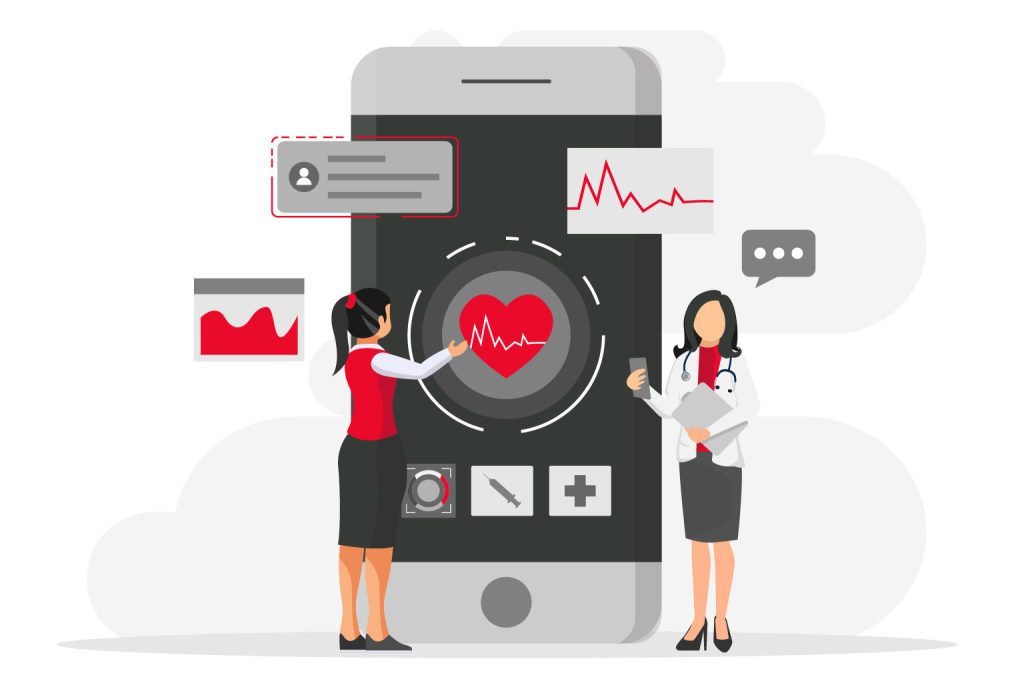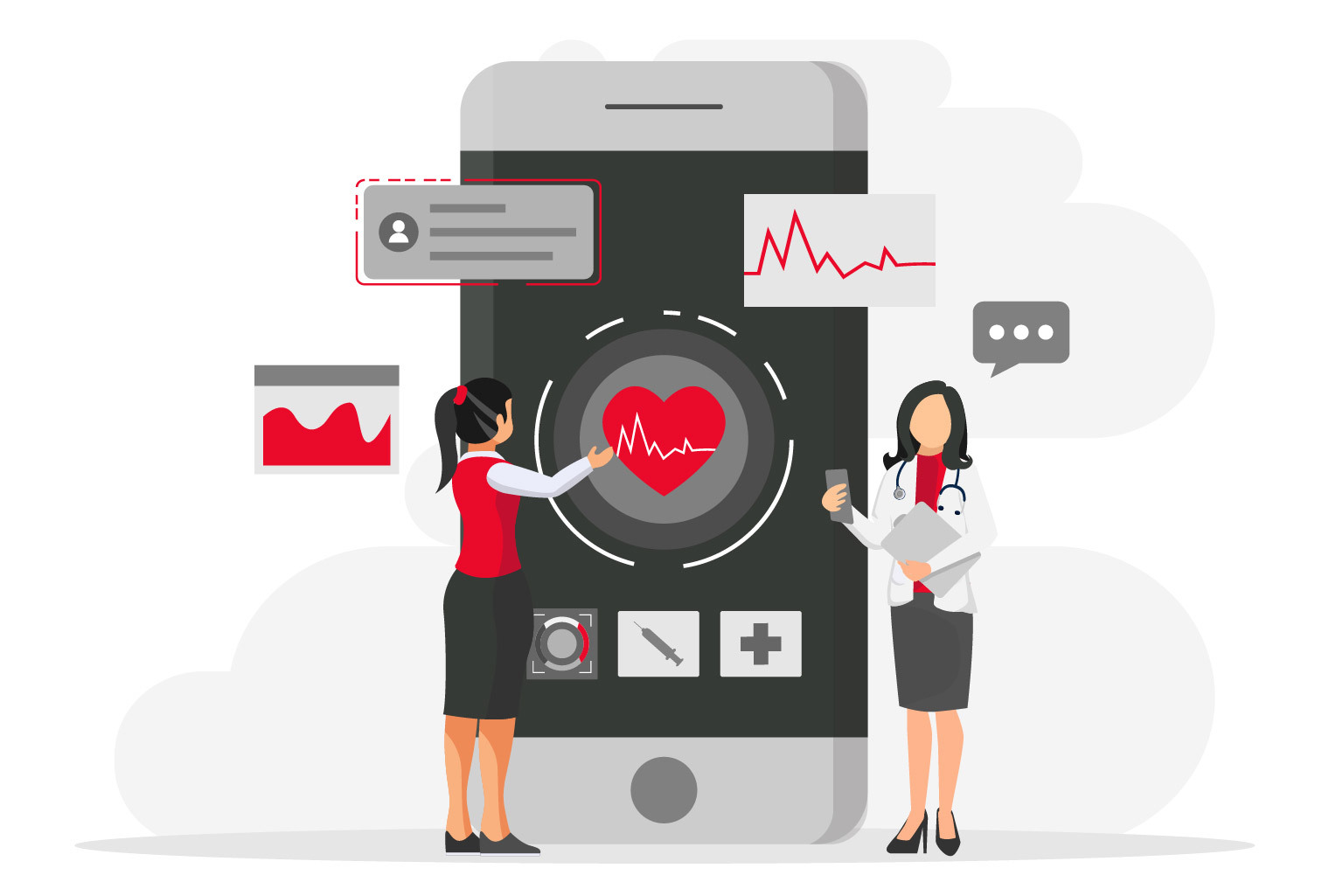
What are the risks in digital healthcare?
Table of Contents
The digitalization of healthcare has provided a wealth of opportunities for improved patient outcomes, greater operational efficiencies, and streamlined administrative processes. However, as with any new technology, there are risks associated with the digitization of healthcare that must be considered and managed. While the potential benefits outweigh the risks in most cases, it is important to understand what these risks are in order to ensure the safety and efficacy of digital healthcare solutions. This brief will outline the various risks associated with digital healthcare and discuss how they can be addressed. Specifically, we will look at privacy concerns, data security issues, connectivity challenges, potential legal implications, and other general technical considerations. By understanding these risks and taking appropriate measures to address them, digital healthcare initiatives can become an invaluable part of any organization’s operations.
Overview of Digital Healthcare Risks
Security threats are one of the major risks associated with digital healthcare. As more and more sensitive patient data is stored and accessed electronically, there is an increased risk of malicious actors gaining access to this information or introducing viruses and other malware into systems. To prevent such threats from posing a risk to patient safety, it is essential that all software solutions used in digital healthcare be developed with strong security protocols and regularly updated accordingly. Additionally, all third-party vendors supplying products or services to an organization should be thoroughly vetted before being permitted to access confidential data or networks.
Slow law vs Fast technology
The conflict between slow law and fast technology is an ongoing challenge, especially in the medical field. Due to the rapid pace of innovation, new products and services are constantly being developed and sometimes released into the market without any regard for existing laws or regulations. This poses a risk to patients and consumers as these products have not been properly vetted or approved by governing bodies. As such, projects that may otherwise be beneficial can be stifled due to the time it takes for the law to catch up with modern advancements. Furthermore, laws cannot always keep up with each individual development, meaning that certain advances might be left unregulated within existing frameworks. In order to ensure fairness, appropriate regulation must be established for technological advancements as soon as possible. Governments need to work closely with tech developers. It is important that lawmakers understand how quickly technology is changing so they can develop efficient regulations which protect consumers while still allowing innovation to continue its rapid growth.
Security breaches
One of the most pressing risks of digital healthcare is security breaches – unauthorized access and manipulation of sensitive data by malicious actors or insiders who have been granted access to systems and networks with inadequate controls or oversight. Such breaches can lead to a wide range of damages, including loss or theft of confidential information and financial losses due to fraud/theft as well as reputational damage from public disclosure of medical records or other private data. Furthermore, cybercriminals may exploit vulnerabilities in medical devices – such as pacemakers – that could result in serious harm for the affected patients.
Cyberattacks
Cyberattacks are a growing risk for healthcare organizations. As more and more medical records, patient information, and other sensitive data is digitized, the risk of cyberattacks also increases. Cybercriminals can use malicious software to gain access to confidential medical records, steal money from hospital accounts, or even disrupt medical services. The consequences of cyberattacks on healthcare organizations can be devastating. Patients may have their personal data stolen and used for identity theft or fraudulent activities; hospitals may suffer financial losses due to fraud or ransomware; and the public’s trust in the healthcare system may be undermined due to potential disruptions in service delivery or breaches of security protocols. To protect against cyberattacks, healthcare organizations must implement robust cybersecurity measures such as strong encryption methods, firewalls, antivirus software, secure routers, intrusion detection systems (IDS), and other measures to ensure that all digital assets remain secure
Unauthorized Access
Unauthorized access to sensitive healthcare data can have a devastating impact on an organization, its staff, and its patients. Unauthorized users can take advantage of lax security procedures or exploit weak passwords to gain access to confidential medical records, financial information, and other sensitive data. This could lead to the theft of confidential patient information, financial losses due to fraudulent activities or identity theft, or even legal repercussions for failing to properly protect such data. To prevent unauthorized access from occurring in the first place, organizations should ensure all their employees are made aware of the importance of data security and develop practices that further strengthen security measures. All employees should be trained on proper password management techniques and understand how malicious actors attempt to gain access. Organizations should also enforce clear policies about who is allowed access to certain systems and which areas of data are off-limits for unauthorized users.
Data Loss or Corruption
Data loss or corruption can significantly disrupt the delivery of healthcare services and jeopardize patient safety. The consequences of data loss or corruption can include financial losses, decreased operational efficiency, and compromised patient records containing sensitive medical information. Such incidents can also result in significant disruptions to operations, such as delays or discontinuation of care, incorrect diagnoses and treatments, malpractice lawsuits, and reputational damage. To prevent data loss or corruption from occurring in the first place, organizations must take a proactive approach to data security by implementing measures such as regular backups, risk assessments, better encryption methods for digital data transmission and storage, improved authentication processes for user access to systems, monitoring for malicious threats on networks and systems, strong administrative safeguards for responding to security incidents quickly and efficiently, and training employees about cybersecurity best practices. Financial losses resulting from data breaches can be costly even after mitigating efforts have been taken due to the need for additional resources devoted towards managing the fallout from the incident.
User Errors or Malicious Actors
User errors or malicious actors can present serious threats to the security of healthcare organizations. Poor user practices, such as leaving a computer unlocked or using weak passwords, can lead to unauthorized access and data breaches. In addition, malicious actors may attempt to gain access to sensitive patient data in order to use it for financial or other criminal purposes. To address these risks, healthcare organizations must ensure their systems are adequately secured and that their employees receive comprehensive training on cybersecurity best practices. Additionally, they should consider using advanced authentication techniques such as multi-factor authentication and biometrics which make it far more difficult for unauthorized users to gain access to sensitive systems and data. Finally, organizations should conduct regular audit checks of their security architecture in order to ensure everything is up-to-date and functioning properly. By taking these steps, healthcare organizations can minimize the risk posed by user errors or malicious actors so that they can keep patients’ information safe and secure at all times.
System Malfunctions or Outages
System malfunctions and outages in healthcare are a serious issue that can cause serious complications for patients and providers. They can result in delayed care or treatments, increased wait times, canceled appointments, lost data, and lost money. In some cases, these outages can even affect patient safety if vital medical processes are disrupted. Outages can be caused by anything from hardware and software glitches to human errors such as incorrect access settings or accidental data corruption. To mitigate the risk of system malfunctions and outages, healthcare organizations must prioritize regular maintenance routines and updates to their software systems so that potential issues can be identified before they become critical problems. Additionally, investing in high-quality server infrastructure with sufficient backup resources is essential for keeping healthcare applications available at all times. Using advanced analytics tools helps organizations detect any potential problems with their systems quickly as well as identify any areas of vulnerability so they can be adequately addressed before they cause an outage. Finally, utilizing secure cloud solutions gives healthcare providers peace of mind that their patient data is safe from malicious actors seeking to disrupt their operations.
HIPAA Violations & Non-Compliance Penalties
HIPAA violations and non-compliance penalties can be serious for healthcare organizations. Not only do HIPAA violations put the personal data of patients at risk, but they also lead to financial losses and even possible criminal charges. The penalties for violating HIPAA regulations extend beyond fines, with civil monetary penalties, corrective actions, and criminal penalties all possible in cases of severe breaches.
In conclusion, our dedicated team of healthcare IT experts has been helping healthcare organizations for many years in carrying out digitization projects, building custom web and mobile applications, and improving their operational efficiency with advanced analytics tools. Our healthcare software solutions are designed to be user-friendly, secure and reliable, aiding patients in receiving better healthcare outcomes and reducing the administrative burden on healthcare providers. We employ cutting-edge technologies to create digital products that are tailored to each customer’s unique needs. Our commitment is to provide our customers with innovative solutions that fit their requirements while meeting industry standards. By leveraging our extensive experience and expertise in healthcare IT projects, we have established a strong track record of success in delivering high-quality results that drive positive change and benefit both patients and providers.
This may interest you:
Telehealth – Your Ticket to On-Demand Healthcare Services
4 benefits of Internet of Things for healthcare
The Rising Popularity of Apps for Mental Health
Virtual Reality in Healthcare – Transforming Medical Education and Patient Care
Artificial Intelligence in Healthcare: Key Trend in Digital Transformation
Big Data in Healthcare – Unlocking the Potential of Medical Records
Predictive Analytics in Healthcare – Staying One Step Ahead of Emergency
Introduction to EHR – What are the Benefits of Electronic Health Records?
HIPAA guidelines for healthcare apps development
Your Guide to the Benefits of Telemedicine Apps
Wearable Devices: Embracing Technology for Better Patient Care
Why should we worry about healthtech? Facts and thoughts
Major medtech trends to follow in 2022 and beyond!
Safe and user-friendly apps: improving the quality of healthcare
How Software Development is Driving Innovation in the Healthcare Industry

